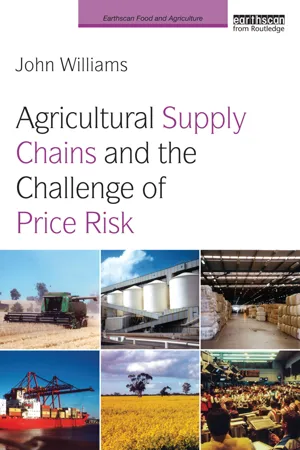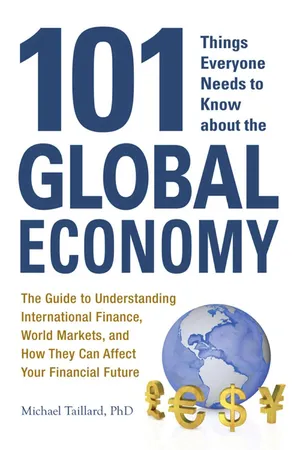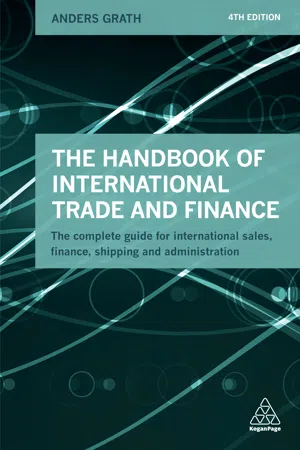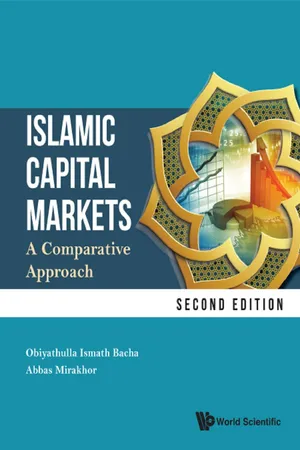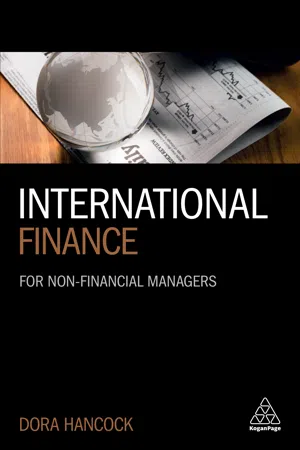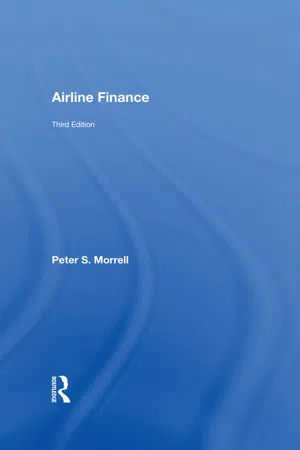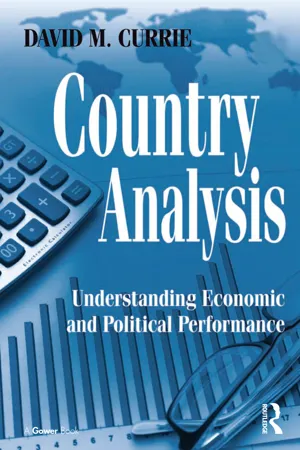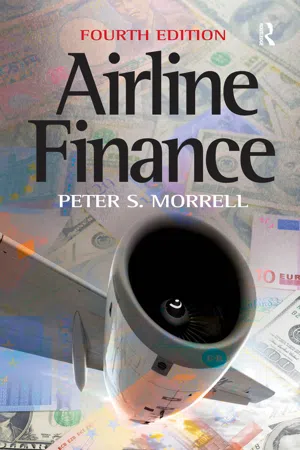Business
Currency Risk
Currency risk refers to the potential for financial loss due to fluctuations in exchange rates. Businesses that engage in international trade or have foreign investments are exposed to currency risk, as changes in exchange rates can impact the value of their assets and liabilities. To manage currency risk, companies often use hedging strategies such as forward contracts or options to mitigate the impact of exchange rate movements.
Written by Perlego with AI-assistance
Related key terms
Related key terms
1 of 4
Related key terms
1 of 3
10 Key excerpts on "Currency Risk"
- eBook - ePub
- Rick Nason, Brendan Chard(Authors)
- 2018(Publication Date)
- Business Expert Press(Publisher)
CHAPTER 6 Currency Risk Management IntroductionCurrency Risk arises from the fluctuations in exchange rates between currencies. Currency trading is the largest trading market with an estimated $3 to $5 trillion being exchanged on a daily basis. Although exchange rate fluctuations are somewhat controlled by central banks, the control has at best a dampening effect and is a secondary factor. Thus, we see wild variations in exchange rates and exchange rate crises such as the Thai Baht crisis in the late 1990s.Currency Risk arises in many different forms. It can be transactional—such as repatriating sales achieved in a foreign currency or paying expenses in a foreign currency, or it can be translational—adjustments to the financial statements based on accounting for foreign currency transactions, or it can be strategic—such as changes in relative price competitiveness to a competitor whose cost structure is based in a different currency.Relatively few companies will hedge translational exposure. Although it affects the earnings of a company for a cycle, it is not related to cash flows. Most analysts understand the effects of translational exposure and thus are not concerned by the effects on earnings. Most analysts consider that attempting to hedge translational exposure is actually just introducing costs and economic exposure to deal with the cosmetic effects on earnings.Currency Risk affects virtually all companies of a certain size. This is irrespective if a company even has foreign operations or sales. The world operates on a global scale and the relative competitiveness of a company is based in large part on their cost base, which in turn is directly affected by exchange rates. Entire countries, and by extension, entire industries can see their relative competitiveness change quickly as exchange rates tend to be one of the more volatile financial variables. With a robust Currency Risk management plan, companies can find their competiveness being severely compromised in a hurry. - John Williams(Author)
- 2013(Publication Date)
- Routledge(Publisher)
1 Currency Risk can exist even though no international trade is occurring.Also, translation risk is an accountancy exposure associated with assets valued in another currency and made dependent on currency movement. If an asset was not readily saleable in the host country and convertible into foreign currency, then the asset might be seriously devalued from an accountancy perspective.2Business risk arises when a domestic export business is viable under low exchange rates but may not be internationally competitive at high exchange rates because it is undermined by cheaper alternatives.3 Alternatively, a domestic import business that is viable under high exchange rates may not be internationally competitive at low exchange rates.If price differences under different currency exchange rates drive international trade, the corollary may suggest that as prices and currency exchange differences converge then less international trade may occur,4 which could have implications or consequences for currency unions.5 However, the ‘law’ of one price remains contentious even for commodities,6 because price discrepancies and their volatility are measured through basis movement, and this regularly introduces hedging risk.7 It can be argued that if the ‘law’ of one price existed, then there would be no international hedging risk. Alternatively, international hedging risk undermines the theory of one price.Countertrade, which mostly comprises product bartering, still remains as high as 25 percent of international trade and settlement because of currency shortages.8 Currency exchange risk is replaced by product exchange risk. A country that undertakes sufficient economic structural and fiscal reform might build up sufficient international currency reserves that could replace the need for countertrade.9- eBook - ePub
101 Things Everyone Needs to Know about the Global Economy
The Guide to Understanding International Finance, World Markets, and How They Can Affect Your Financial Future
- Michael Taillard(Author)
- 2012(Publication Date)
- Adams Media(Publisher)
The risk in exchange rate fluctuation is that the currency of exchange loses value and you end up paying more or earning less than you had originally anticipated. Note that in the case of transaction risk, one person’s loss is very often the other person’s gain. As a result, foreign exchange risk holds both risk and potential. A company may analyze this risk (and many others) to either decrease the amount of loss they experience or increase the amount of revenues they earn.Companies trying to take advantage of foreign exchange fluctuations typically do so through asset management rather than attempting to do so through their purchases and sales. In other words, many prefer to maintain as little transaction risk as possible since the gain or loss on such foreign exchange fluctuations can be difficult to predict.Nations that have large, stable economies tend to be associated less with transaction risk. Of course, organizations that participate in significantly large international transactions will be at greater risk for even small changes in exchange rate; those nations with more stable fiat currencies—or currencies where the money derives its value from government regulation—usually experience less volatility.Why You Should Care
Except between two nations whose currencies are pegged directly to one another, transaction risk is an issue for every transaction that occurs across national borders. As a practical matter, since every time you buy anything, there’s a very good chance it was made, at least in part, in some nation other than your own, you’re directly affected by changes in the exchange rate.Most businesses that regularly transact business over multiple currencies account for the expected losses associated with this risk, or at least the costs of mitigating the risk. This is reflected in their pricing strategy, causing the price of the goods you’re purchasing to be somewhat higher.49. POLITICAL RISK
The role of a nation in the global economy is set, in large part, by the government in charge of that nation. The policies of that government define how the nation interacts with others, how companies participate in trade, and the degree of risk that organizations attempting to trade with that nation face. A change in government policy can greatly help or harm not only individuals or companies, but the entire global economy. - eBook - ePub
The Handbook of International Trade and Finance
The Complete Guide for International Sales, Finance, Shipping and Administration
- Anders Grath(Author)
- 2016(Publication Date)
- Kogan Page(Publisher)
Second, it is quite usual that these long-term trends are quite opposite to the short-term development, and it is this short-term trend that is more important when evaluating the risk aspects of most trade transactions. It is the actual exchange rate that is relevant, whether this is established through a spot or forward transaction. To evaluate Currency Risks, every company must know what types of risk may occur and to decide what risks should be covered in that particular case. Currency fluctuations affect the company in three different ways: by creating financial mismatches, described as Balance exposure below; by changing the value in local currency of foreign sales, described as Payment exposure below; by altering the competitive situation and the behaviour of competitors, described as Competition exposure below. Balance and Payment exposure mostly have a direct currency effect on the company and are often called ‘translation or accounting exposure’, whereas Competitive exposure often has a more indirect currency effect. Balance exposure is, in principle, an accounting risk, which may appear in the company’s books when consolidating foreign assets. When assets and liabilities are converted into the consolidated accounts of the group for accounting purposes, these figures will be calculated at different exchange rates, and might then give a distorted picture of the real value of the assets. For example, assets which are financed through a foreign currency loan are normally included in the consolidated statements at the acquisition rate, whereas the corresponding loan is valued at the higher of the acquisition rate and the rate when closing the accounts. Therefore, moving exchange rates will always have an effect on the accounts of the business, either positively or negatively - eBook - ePub
Islamic Capital Markets
A Comparative Approach
- Obiyathulla Ismath Bacha, Abbas Mirakhor(Authors)
- 2019(Publication Date)
- WSPC(Publisher)
terms of trade between any two countries. An undervalued or underpriced exchange rate increases a nation’s competitiveness, whereas an overvalued exchange rate reduces competitiveness. These changes in competitiveness come hand in hand with other factors. For example, trying to gain competitiveness by deliberately undervaluing a currency may only work temporarily. Over a longer period, such undervaluation causes imported inflation and provides perverse incentives and a myriad of other problems, including dysfunctional industrial growth. The long-term consequences could be heavy.13.3.Exchange Rate RiskHaving discussed changes in exchange rates, we now turn to the related issue of exchange rate risk. If exchange rates can change, the parties involved foreign currency transactions would be exposed to exchange rate risks. Exchange rate risks can simply be defined as the potential change in the value of assets, liabilities, revenues, and costs as a result of changes in the exchange rate. To understand how changes in exchange rates can cause changes in revenues, costs, assets, or liabilities, we go through the following illustration in Box 13.2 :Box 13.2. Illustration: Understanding Exchange Rate Risk• Changes in revenue due to exchange rate changeA Malaysian exporter of sawn timber has just shipped 500 tons to his Japanese customer, the Marubeni Corporation. The exporter has priced the product of RM30 million and has, therefore, invoiced Marubeni Corp. for ¥300 million. This Yen amount was arrived at using the current spot rate of ¥10 per MYR. Marubeni has 90 days to pay the ¥300million. As is typical with most cross-border transactions, where at least one party would be faced with exchange rate exposure, the Malaysian exporter is exposed to exchange rate risk in this case. Marubeni Corp. of Japan has no currency exposure since they are paying in Yen, which is the home currency. The exposure, therefore, is for the Malaysian exporter who has a foreign currency receivable. This ¥300 million receivable is revenue for the Malaysian company.Depending on what the spot rate between Yen and MYR is on Day 90, the ¥300 million received may have a value different from the expected RM30 million. If the Yen appreciates over the next 90 days, the proceeds in MYR could be higher than RM30 million. If, on the other hand, the Yen depreciates, proceeds could be lower. It is this uncertainty and the resulting implied “gain” or “loss” that is the exchange rate risk. We examine below the Ringgit (MYR) proceeds for three different spot rates on Day 90. - eBook - ePub
International Finance
For Non-Financial Managers
- Dora Hancock(Author)
- 2018(Publication Date)
- Kogan Page(Publisher)
08Determining and managing exchange risk
At the end of this chapter you will be able to:- identify and discuss the different types of exchange risk;
- identify strategies for reducing transaction exposure;
- construct a money market hedge to hedge a transaction risk and compare to the equivalent forward rate hedge to select the optimum hedge;
- discuss hedging and economic exposure.
Introduction
In previous chapters we discussed the determinants of exchange risks and suggested that companies may suffer losses due to changes in exchange rates. In this chapter we are going to look in detail at the risks faced by companies trading internationally and the strategies they can take to reduce or eliminate those risks. Finally we will consider the benefits, as well as the costs, of hedging risks.Risks
Companies face three different kinds of exchange risk:- translation risk;
- transaction risk;
- economic or operating risk.
Translation risk
Translation risk is the risk that exchange rate movements will have an impact on the published financial statements, the income statement and the statement of financial position of companies. We can see how this works with a simple example.Passage contains an image
Example Suppose an MNC determines that the following amounts are owed between subsidiaries in the group.Table 8.1 Proportion of GDP spent by governments 2014Debt (in £’000) due from company based in Payment (in £’000) due to company based in - eBook - ePub
- Peter S. Morrell(Author)
- 2019(Publication Date)
- Routledge(Publisher)
Risk Management: Foreign Currency and Fuel Price9.1 Exchange Rate VolatilityInternational airlines sell tickets in many different countries and currencies, even in places where they do not have their own operations. They also incur operating expenses in the currencies of the countries they serve, and buy capital equipment from the major aerospace exporting countries such as the US, Canada, UK, France, Brazil and Germany.It would be impossible for there to be a perfect match in both amounts and timing of foreign currency receipts and expenses. An airline may achieve some sort of balance over the year as a whole in receipts and expenses in a certain currency, but there will be weeks and months of surpluses followed by periods of shortfall. This can be managed by borrowing and lending in this one currency, and thus not involving conversion into another currency or any exchange risk. But net surpluses in a foreign currency would have to be exchanged into the local currency, which is the currency in which most costs are incurred and ultimately any profits would be retained or distributed. Here, there will be a time lag between income and expenditure which involves a risk of a movement in the exchange rate, and therefore a foreign exchange loss or gain. An airline’s treasury has the task of managing revenues, expenditures, assets and liabilities in both local and foreign currencies, and thus minimising the risks of exposure to large currency movements.Since the late 1960s, exchange rates of currencies have floated with respect to other major currencies, subject to central bank intervention, in pursuit of economic and monetary goals. Some currencies are pegged to major currencies, such as the US dollar, or a basket of the currencies of their major trading partners. Some countries do not manage their exchange rates as a policy objective, leaving them to float freely. - eBook - ePub
Country Analysis
Understanding Economic and Political Performance
- David M. Currie(Author)
- 2016(Publication Date)
- Routledge(Publisher)
Some people may be willing to assume the risk of losing money on the investment. They may do it because they are risk lovers attracted by the high potential return. They may do it because they are confident the euro will appreciate over the three months. Perhaps they pay an investment advisory service that recommends euro-denominated assets over the next three months. For whatever reason, they are willing to speculate. These investors are attracted by the high return despite the risk inherent in the investment.Other people may be more hesitant to take risks, particularly when there is a chance they could actually lose money on the investment, not simply earn a lower return. These people might be willing to give up a chance at higher profits in exchange for protection against the possibility of loss. In the language of risk and return, they are willing to accept a lower return if it is accompanied by lower risk.The risk we’re facing is similar to the risk faced by many firms conducting international transactions. Box 9.1 discusses how Japanese firms were exposed to Currency Risk due to their operations in the US.Table 9.1 Spot rates for US dollarHedging Currency Risk
There are numerous ways for investors to avoid Currency Risk if they choose to do so. We will not discuss all of them, but we will discuss the most popular. With the exception of forward contracts, all of these methods have been developed over the past three decades. Before the 1970s, there was little reason to protect against Currency Risk simply because governments, rather than the currency market, established exchange rates, so there was not so much volatility in currency prices.Table 9.2 Return to US investor on a three-month French BTF Box 9.1 Japanese firms suffer from falling dollarA depreciating dollar (an equivalent statement is “an appreciating yen”) means that sales in the US market of Japanese products translate into fewer yen when the currency is repatriated. Japanese automobile and consumer goods manufacturers have been adversely affected as the dollar depreciated steadily against the yen from 2002 to 2008.When profits at Toyota fell in 2004, the company attributed the decline to lower prices in the US due to discounting and to the depreciating US dollar. Lower prices meant Toyota earned fewer US dollars for each car sold, while a depreciating dollar meant that each dollar exchanged for fewer Japanese yen. Toyota generates two-thirds of its profits from sales in North America, so a change in the US or Canada has a major impact on the company. Toyota said that for every yen that the Japanese currency appreciates, the company loses about 20 billion yen of operating profit. (For example, if the yen appreciates to 117 per dollar from 118 per dollar, Toyota loses 20 billion yen of operating profits.) In 2003, the dollar sold for 118 yen, but in 2004 the dollar sold for only 110 yen, meaning a decline of 160 billion yen in Toyota’s operating profit. - eBook - ePub
- Peter S. Morrell(Author)
- 2018(Publication Date)
- Routledge(Publisher)
Chapter 9 Risk Management: Foreign Currency, Fuel Prices and Interest RatesThis chapter will look at how airlines deal with three risks that stem from decisions on foreign exchange, fuel contracts and interest rates. These arise from the dayto-day running of an airline, rather than ones such as terrorist threats or epidemics that occur on a periodic or cyclical basis. No airline can disregard them, although foreign Currency Risks would be relatively less important to, say a domestic US airline, than one selling and buying in a large number of currencies worldwide. The focus here will be on the first two risks and the responses from airlines to minimise their impact on profitability or profit volatility over time. However, interest rate risk will also be addressed in the last section.It should be noted that airlines flying to/from and within Europe are required to submit an allowance for the amount of CO2 they emit during 2012 and subsequent years. Most of these allowances will initially be handed out without charge and some auctioned, but any difference between these and actual emissions will need to be purchased in the market. There is a risk that the market price of allowances might increase as the submission date approaches, so some airlines have already purchased some in advance to reduce this risk. This is similar to an add-on to the fuel price and will not be discussed further below.9.1 Exchange Rate Volatility
International airlines sell tickets in many different countries and currencies, even in places where they do not have their own operations. They also incur operating expenses in the currencies of the countries they serve, and buy capital equipment from the major aerospace exporting countries such as the US, Canada, the UK, France, Brazil and Germany.It would be impossible for there to be a perfect match in both amounts and timing of foreign currency receipts and expenses. An airline may achieve some sort of balance over the year as a whole in receipts and expenses in a certain currency, but there will be weeks and months of surpluses followed by periods of shortfall. This can be managed by borrowing and lending in this one currency, and thus not involving conversion into another currency or any exchange risk. But net surpluses in a foreign currency would have to be exchanged into the local currency, which is the currency in which most costs are incurred and ultimately any profits would be retained or distributed. Here, there will be a time lag between income and expenditure which involves a risk of a movement in the exchange rate, and therefore a foreign exchange loss or gain. An airline’s treasury has the task of managing revenues, expenditures, assets and liabilities in both local and foreign currencies, and thus minimising the risks of exposure to large currency movements. - eBook - ePub
International Finance
Contemporary Issues
- Maurice D. Levi, Dilip Das(Authors)
- 2007(Publication Date)
- Routledge(Publisher)
20 For example, if Aviva can negotiate the price of its imported denim cloth in terms of US dollars, it need not face any foreign exchange risk or exposure on its imports. Indeed, in general, when business convention or the power that a firm holds in negotiating its purchases and sales results in agreement on prices in terms of the home currency, the firm that trades abroad will face no more receivables and payables exposure than the firm with strictly domestic interests. However, even when trade can be denominated in the importer’s or exporter’s local currency, only part of the risk and exposure is resolved. For example, an American exporter who charges for his or her products in US dollars will still find the level of sales dependent on the exchange rate, and hence faces operating exposure and risk. This is because the quantity of exports depends on the price the foreign buyer must pay, and this is determined by the rate of exchange between the dollar and the buyer’s currency. Therefore, even when all trade is in local currency, some foreign exchange exposure – operating exposure – will remain.Of course, only one side of an international deal can be hedged by stating the price in the importer’s or exporter’s currency. If the importer has his or her way, the exporter will face the exchange risk and exposure, and vice versa.When there is international bidding for a contract, it may be wise for the company calling for bids to allow the bidders to state prices in their own currencies. For example, if Aviva invites bids to supply it with denim cloth, Aviva may be better off allowing the bids to come in stated in pounds, euros, and so on, rather than insisting on dollar bids. The reason is that the bidders cannot easily hedge because they do not know if their bids will succeed (they can use options, but options contracts from options exchanges are contingent on future spot exchange rates rather than the success of bids for orders, and so are not ideally suited for the purpose). When all the foreign-currency-priced bids are in, Aviva can convert them into dollars at the going forward exchange rates, choose the cheapest bid, and then buy the appropriate foreign currency at the time it announces the successful bidder. This is a case of asymmetric information, where the buyer can hedge and the seller cannot, and where the seller may therefore add a risk premium to the bid. When the seller is inviting bids, as when equipment or a company is up for sale, the seller knows more than the buyer, and so bidding should be in the buyer’s currency. The seller can convert the foreign-currency bids into their own currency, choose the highest bid, and then sell the foreign currency forward at the same time as they inform the successful bidder.
Index pages curate the most relevant extracts from our library of academic textbooks. They’ve been created using an in-house natural language model (NLM), each adding context and meaning to key research topics.
Explore more topic indexes
Explore more topic indexes
1 of 6
Explore more topic indexes
1 of 4

